Note: If an image ever fails to appear - refresh your page, it really is there
Joint Services Flags and Ministry of Defence Flags
The armed forces of the United Kingdom are basically the Royal Navy, the British Army, and the Royal Air Force. Although the Commander-in-Chief of the British Armed Forces is the British monarch, under British constitutional law these forces can only be maintained in peacetime by Parliament's consent. Because of this, although the members of the armed forces swear allegiance to the monarch, the Prime Minister holds de facto authority over the armed forces.
Strangely enough, the British Army is considered constitutionally the army of Parliament, not the monarch; this is a result of the English Civil War and was affirmed in the 1689 Bill of Rights. (This is why the British Army is not called the "Royal" Army, as is the Royal Navy and Royal Air Force) Under the Prime Minister, the armed forces are managed by the Defence Council of the Ministry of Defence and the Secretary of State for Defence.
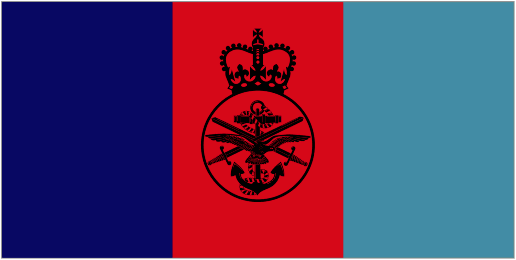
Joint Services Flag 1959
Under this constitutional framework, exists the Joint Services Command whose duty is to coordinate and command operations that require the deployment and participation of more than one branch of the British military. Missions of peace keeping, humanitarian aid, and disaster relief have become increasingly important in recent years to support the policies of the United Nations and NATO. To further these activities, the Joint Services has also established a special military academic called the Joint Services Command and Staff College (JSCSC) to providing training and education to officers of the Royal Navy, British Army, Royal Air Force, Ministry of Defence Civil Service, and serving officers of other Commonwealth states on these new semi-military missions.
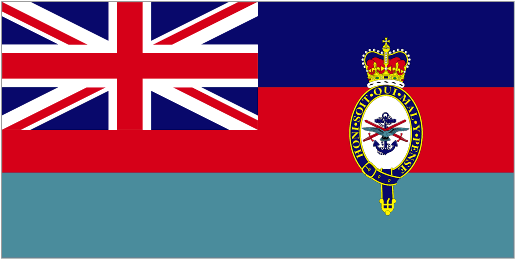
Chief of the Defence Staff 1965
The Chief of the Defence Staff is the professional head of the United Kingdom Armed Forces and the principal military adviser to the Secretary of State for Defence and the Government.
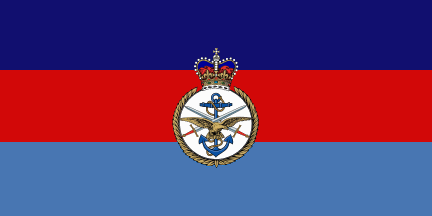
Chief of Defence Staff 1956–1965
Supporting the Chief of the Defence Staff, there are also several deputy chiefs, such as Deputy Chief of the Defence Staff (Equipment Capability), Deputy CDS (Personnel) and Deputy CDS (Commitments), Deputy Chief of the Defence Staff (Health), etc., who round out his staff. Additionally, there are a number of Assistant Chiefs of Defence Staff, including the Defence Services Secretary in the Royal Household of the Sovereign of the United Kingdom, who is also customarily considered Assistant Chief of Defence Staff (Personnel and Reserves).

Ministry of Defence 1959
As previously stated the Ministry of Defence (MoD) is the United Kingdom's government department responsible for implementation of government defence policy and is the headquarters of the British Armed Forces.
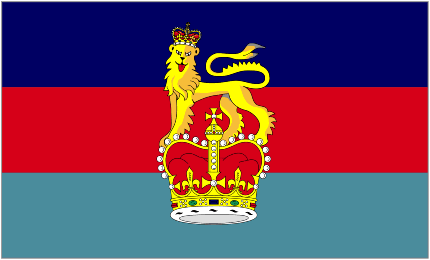
Secretary of State for Defence 1965 (?)
The ministerial team at the Ministry of Defence is headed by the Secretary of State for Defence, who is supported by one Minister of State and four Parliamentary Under-Secretaries of State.

Unified Commander-in-Chief 1967
The Unified Commander-in-Chief is in charge of operations and/or an area that involves a significant number of elements from the various branches of the military forces of the United Kingdom.
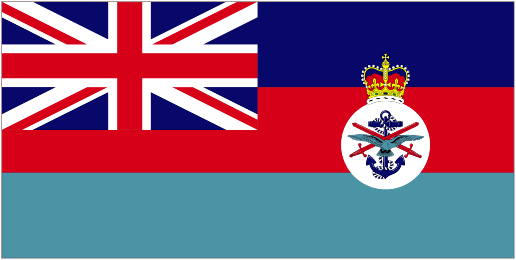
3-Star Unified Commander 1967
To state the obvious, this flag is used at the headquarters of a Joint Services command with a 3-Star Admiral or General in charge of the operation or area.
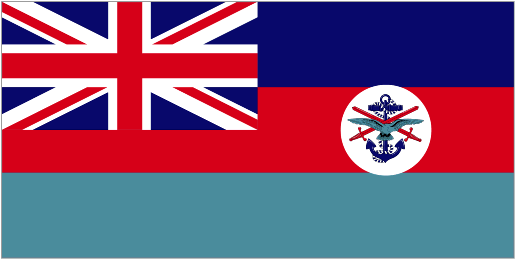
2-Star Unified Commander 1967
To again state the obvious, this flag is used at the headquarters of a Joint Services command with a 2-Star Admiral or General in charge of the operation or area.
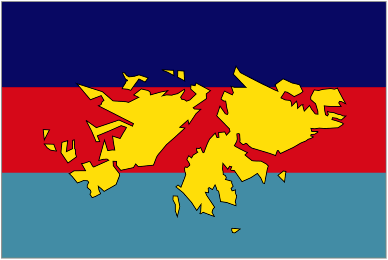
British Forces Falkland Islands
After the 1982 Falkland Islands conflict, the United Kingdom established a garrison on the Falkland Islands, consisting of naval, land and air elements. The Falklands Conflict led the way in the Services working together, and this has continued to the present day. A combined force comprising members of the Army, Royal Air Force and Royal Navy are based on the Islands.
| Top of Page | Return to "English Flags Page" | Return to "Vexillological Essays and Chart Pages Menu" |
- My thanks to David Prothero for his invaluable help on this page -
|